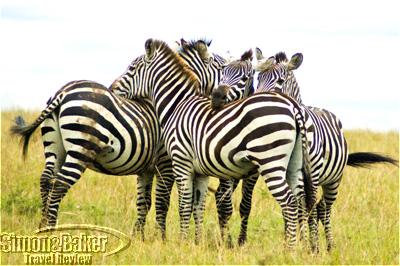
by Editor | Nov 1, 2008 | Africa, Kenya, Simon and Baker Travel Review
Porini is Swahili for “in the wilds.” Nowhere did I find a more vivid proof of it than at the Mara Porini Camp. The intimate luxury camp was nestled in a soaring grove of yellow-barked acacia, within the Ol Kinyei Conservancy, a private 8,500 acre (3,500 hectare) swath of the Serengeti-Masai Mara ecosystem set aside by the local Masai land-owners for the exclusive use of Mara Porini guests. This pristine wilderness of open savannah plains and rolling hills, riverine forest, permanent streams and spectacular views across the Masai Mara was home for the broad variety of species for which the park is famous, including resident big cats.
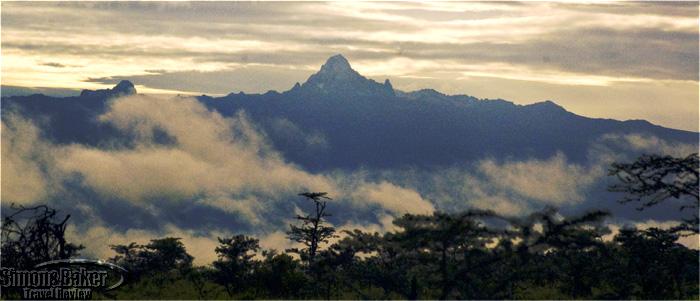
by Editor | Nov 1, 2008 | Africa, Kenya, Laikipia, Simon and Baker Travel Review
Porini Rhino Camp was located within the 90,000 acre (365 square kilometer) Ol Pejeta Conservancy, on a verdant plateau between the foothills of the Aberdares Range and the stately snow-capped peak of Mount Kenya. Although the area was on the equator, the altitude (around 6,500 feet or 2,000 meters) made for a temperate climate with cool nights, and a landscape of wooded grassland reminiscent of alpine pastures. However, there was nothing alpine about the fauna; game viewing was some of the best East Africa had to offer both in density and variety. Within minutes of entering the conservancy, I had sighted a white rhino, followed in short order by a large journey of reticulated giraffes.
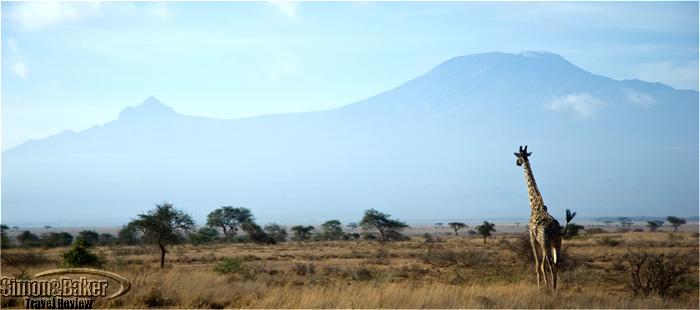
by Editor | Nov 1, 2008 | Africa, Amboseli, Kenya, Simon and Baker Travel Review
A secluded tented camp under the giant umbrella of a thorn acacia tree; elephants wandering across a grassy plain against the majestic backdrop of the snow-capped Mount Kilimanjaro; proud Masai nomads herding their cattle in the distance? My Amboseli Porini safari epitomized the timeless romance of the Kenya! The breathtaking outline of Kilimanjaro filled the horizon as we entered the Selenkay Conservation Area, a 15,000 acre (60 square kilometer) private game reserve where the camp was located, at the northern edge of Amboseli National Park. A cheetah flashed across the track just ahead of us. Further on, a pair of elephant cows and their calves showed us less concern. We waited until they cared to let us go by. Giraffes peered over the treetops. Potbellied warthog piglets scampered behind their mother. By the time we reached the camp, I had already enjoyed a rich impromptu game drive. There, I was warmly welcomed by the camp manager, Tony Musembi and members of the Masai staff, and shown to my tent: a large, comfortably furnished sleeping room and bathroom. I was pleased to notice the environmentally-friendly features of my accommodation: solar electricity, bush shower and the absence of any permanent foundations or fixtures. After enjoying a late al fresco lunch in the shade of an acacia and ample time to settle in, I was escorted to the nearby Masai village for a visit.
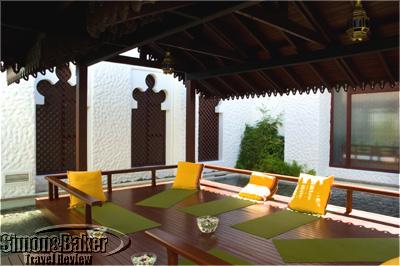
by Editor | Oct 1, 2008 | Africa, Kenya, Kenya Coast, Simon and Baker Travel Review
The pundit who declared that “happiness is a journey, not a destination” probably was not thinking of a twenty-four hour trip across two continents in airplanes booked to capacity; and clearly had never experienced the Maisha Spa upon arrival. That is precisely what I did on a recent visit to Kenya: no sooner had I settled into the Mombasa Serena Beach Hotel that I headed for its spa.
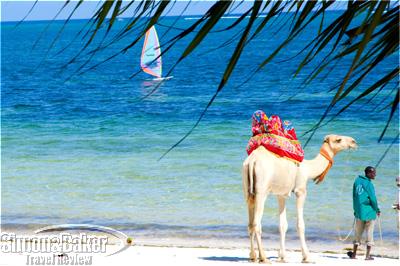
by Editor | Oct 1, 2008 | Africa, Kenya, Kenya Coast, Simon and Baker Travel Review
Inspired by the rich architectural tradition of the East African coast, the Serena Beach Hotel stretched along the Indian Ocean shoreline with the exotic appeal of an ancient Swahili town. The property was divided into picturesque clusters of whitewashed two- and three-story buildings, with a central core of elegant public spaces. The reception hall set the mood. Its intricately carved portal led into a cool soaring foyer with lush oriental rugs scattered about the gleaming stone floor. To the left of the entrance the wall behind the long marble-topped reception desk was covered with rows upon rows of letterbox-shaped slots, exact replicas of those found in the harems of Swahili homes until the 19 th century. Now, they made unusual key receptacles. On both sides of the hall, tall pillars led the eye to the far end of the building and the low staircase rising to a landing with a panoramic view of the sun-washed terraces and galleried lounges facing the palm-shaded beach and the cerulean blue sea beyond.





